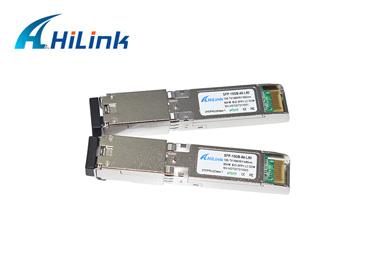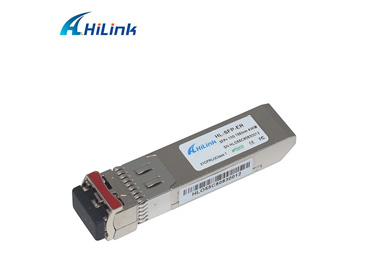How Do I Troubleshoot My Fibre Optic Transceiver?
Aug. 15, 2022
Have you ever had trouble using a transceiver in your network? It is very simple for clients to solve some common problems, such as compatibility issues, using the wrong fiber patch cable, etc. However, there are other difficulties when using transceivers (e.g. transmission problems). This article will focus on how to troubleshoot and resolve transmission, message reading, and hardware problems.
Transmission Troubleshooting and Solutions
Typically, port status faults manifest themselves in four ways: port down (link failure), no messages sent or received on port up, unstable link, and CRC errors. You can solve these problems in four ways.
Link failure
Taking the 10G SFP+ optical module as an example, when the optical port connected by the switch to other network devices is not active, you can troubleshoot the port status and the inserted fiber transceiver in the following four ways.
10G 1490NM/1550NM 80KM BIDI SFP+
First, you need to check whether the operating modes of the two ports connected match or whether the operating mode of the interface where the SFP+ module is located matches the operating state of the optical module. You can check this by running the command "show interface brief". If they don't match, you can use the speed and duplex mode commands to configure and fix it.
Next, check that the ports of the two network devices that need to be plugged into the transceiver are working by using the Loopback test. For example, connect the two 10G SFP+ ports of the switch via a 10G SFP+ DAC cable (or two 10G SFP+ optical modules and a fiber patch cable). If the 10G SFP+ port is open, the network equipment on the opposite end is faulty, and vice versa.
Check the basic parameters of the fiber optic transceiver.
DDM-Configure the "show interfaces transceiver details" command to check if the parameters are normal. If there are alarms, it means that the module is not working properly or the optical module does not match the optical interface type.
Optical power - Use an optical power meter to test whether the transmit and receive the power of the interface is within the normal range.
Wavelength/transmission distance - perform the "show recovery interface" command to see if the wavelength and transmission distance of the optical module are the same at both ends.
10G 1550NM 40KM ER SFP+
Finally, check the fiber optic cable. Single-mode SFP+ transceivers must be used with single-mode optical cables, and multimode SFP+ modules must be used with multimode optical cables. If there is a mismatch, replace the fiber optic cable with a suitable one. After the above checks, if the transceiver link is still faulty, it is recommended to contact the supplier for technical support.
No packets are being received or sent
If the port status indicator is on, but no packets are being received or sent, this can be investigated in three ways. The first is to check the port's packet statistics. Check that the status of both ports is always up and check that the number of packets is increasing at both ends. Then, check the port configuration. Make sure the ports are properly configured or remove the configuration as needed. And check the MTU value. If it is greater than 1500, the configuration needs to be modified.
Finally, check that the port and link are OK. Move the transceiver to another port or change the connected device to see if packets are still not being received or sent. If this is the case, replace the transceiver with another fiber optic transceiver. After the above checks, if the transceiver link is still faulty, it is recommended to contact the transceiver supplier for technical support.













